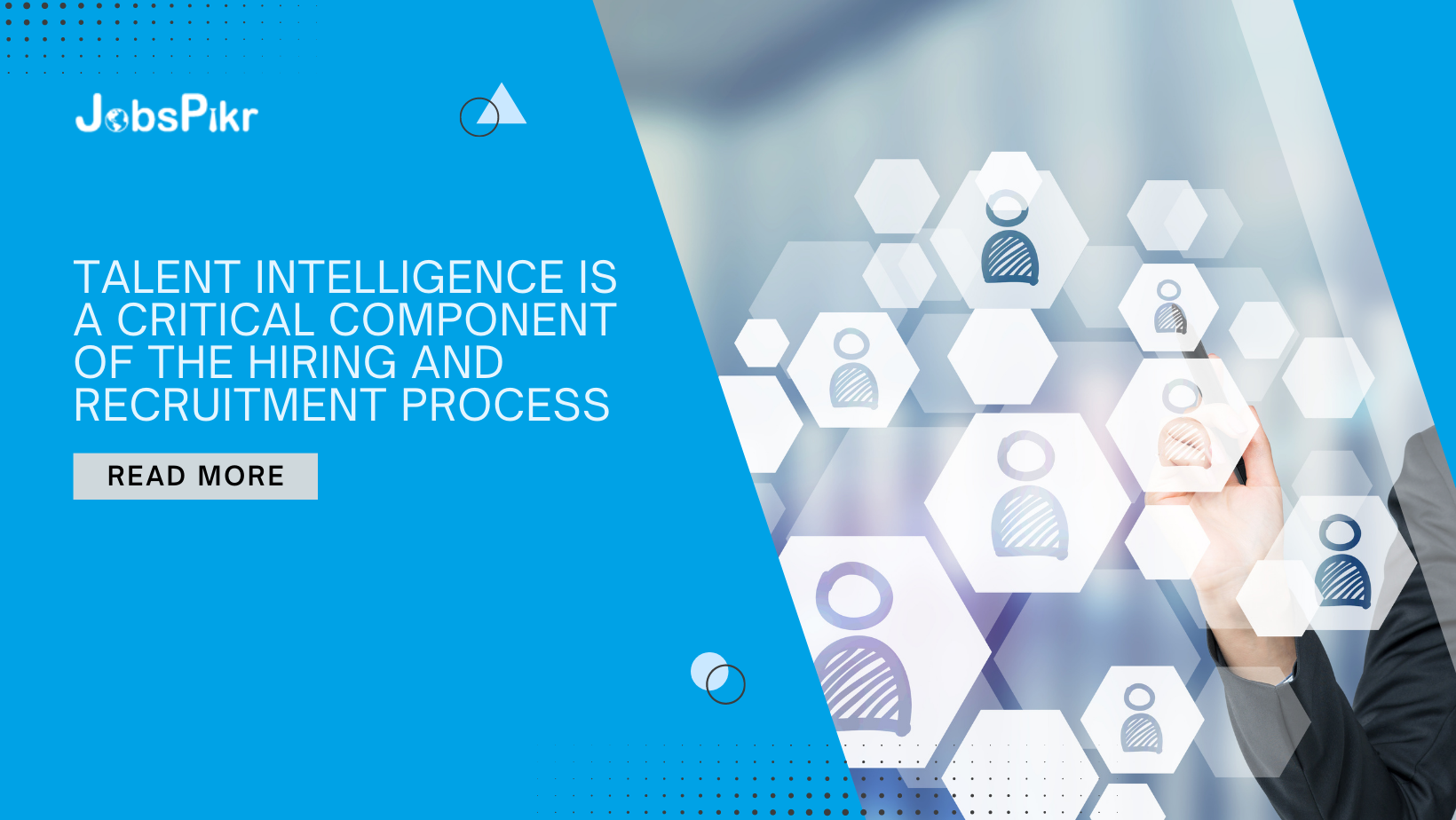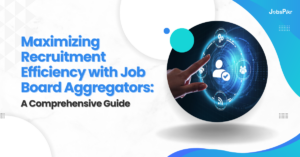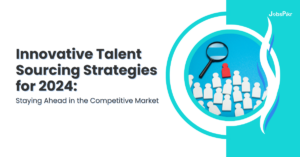In the 21st century, companies are not only competing on the quality of products that they build or the services they offer. They are also competing to get their hands on the best talent. Having the right individuals in key positions can be the difference between “making it or breaking it”. Companies that have realized these facts have started to use talent intelligence to understand and structure their talent needs. Such companies also use a more structured approach such as strategic workforce planning to provide better ‘people management’.
What is Talent Intelligence?
Before we get down to understanding the benefits of Talent Intelligence or the best way to apply it, we need to first figure out what it is. Talent Intelligence is predominantly the application of data instead of hunches or gut feelings or managerial recommendations for hiring, retaining, identifying, or attracting top talent. Patterns and trends in raw data help the HR team in identifying pain points and removing them to get better employees. Data also helps in finding future leaders among the early joiners and ensuring that they grow along with the company.
Data Sources for Talent Intelligence can range from Social Media data to Job Posts from across the world. Talent Intelligence also helps companies make informed decisions related to–
- Which channels to focus on for recruitment efforts?
- What skills to prioritize for upskilling?
- Creating more efficient talent acquisition plans.
- Resolving existing bottlenecks to speed up all existing workflows.
The Benefits of Using Talent Intelligence
Talent Intelligence needs to be gathered internally first. The people’s team needs to analyze the strengths and weaknesses of different teams in the company. Next, it needs to evaluate areas of improvement and individuals who can take up bigger roles and responsibilities. Once this is done, the rest of the requirements can be sorted and individuals can be hired to fill the gap. The hiring process can also be greatly improved through various means such as:
- Identifying the star candidates: Matching open positions against applicants is a time consuming task. Doing it manually also leaves room for errors. You can improve the entire process by using an autonomous system running on talent intelligence. This would essentially take into account job market data along with internal talent data to find the best-fitting individuals.
- Reducing the time frame of the hiring cycle: Long hiring cycles usually cause applicants to drop out or accept other offers instead. Reasons can range from too many rounds of interviews or delays in the decision-making processes. Talent Intelligence will help you in comparing your hiring workflows with your competitors’ and bring about changes to reduce dropouts.
- Improving Employer Branding: Employer Branding plays a big role for job applicants. Talent Intelligence can help you in conducting marketing campaigns or using alternate avenues to showcase your company’s work culture, tech innovations, style of working, and more. All of this would increase the number of applicants for your job posts.
- Reducing Costs: The hiring and recruitment process can be expensive for mid-size or large companies that are continuously filling up positions across departments and verticals. For such companies, the cost to hire has to be lowered. This can only be done with enough job market data and talent intelligence at hand. Some experimentation may also be needed to find the most optimum solution.
- Identifying Skills Gaps: As new tech innovations change the way people do their jobs, companies also need to figure out which latest skills are missing in the team. The people’s team is usually tasked with such activities, and it is here that talent intelligence can support them massively. New individuals can be hired who can fill in gaps and also guide the rest of the team to upgrade themselves.
- Diversity and Inclusion: Companies today want to access a more diverse talent group. They also want to create a level playing field where the only factor is merit and experience. Having more autonomous systems in place that run on talent intelligence instead of human decisions automatically removes biases and helps bring people from different backgrounds and ideas to the same table.
- Strategic Workforce Planning: Companies that want to adopt the latest hiring processes must have a strategic workforce plan in place. This would help achieve the long-term and short-term business goals while keeping a check on the ‘people needs’. However strategic workforce planning cannot be done without talent intelligence on both internal and external resources.
- Retention of strong individuals: As companies grow, they may have access to better talent, but may also face high attrition rates. External factors like more opportunities, and better salaries may also affect the numbers. For instance, as industries recovered from Covid, attrition numbers saw a rise with more individuals seeking higher-paying jobs. In countries like India, attrition numbers went up to 20.3% in 2022 from just 6% in 2020. Using talent intelligence helps in rewarding older, top-performing employees so that you need to give less effort into replacing them and instead focus on filling up new roles.
Using Talent Intelligence
Talent Intelligence strategies can differ vastly based on the problems that you are trying to solve. The data that you want to tap into, the outcomes that you are expecting, and the pace at which you want to bring about changes in existing structures, will all define your strategy.
However, your HR team cannot work on raw data and will need an AI or ML-powered Talent Intelligence Platform to gain access to global job market data. Our platform JobsPikr fills up the gap for companies who want to make data-backed decisions in their hiring process. It also enables them to take major decisions related to workforce management such as skill gap analysis, labor market trend analysis, salary benchmarking, and more- using both live and historical data.
Our live data feed and market insights provide comprehensive job data solutions. This covers multiple industries and locations in terms of market trends, salary data, and hiring patterns. With more than a million job scans per day, we aim to keep you updated on all recruitment data in real-time.
FAQ
In what ways can Talent Intelligence inform Global Talent Acquisition strategies?
With the ability to offer firms data-driven strategies and actionable insights to attract, develop, and retain top people globally, talent intelligence plays a critical role in shaping global talent acquisition strategies. This is how talent intelligence can support international talent acquisition strategies:
Here’s how talent intelligence can inform global talent acquisition strategies:
- Significance of Talent Intelligence:Organizations can use talent intelligence to inform strategic choices about their international talent acquisition initiatives. Businesses may detect skill gaps, forecast future personnel requirements, and create focused recruitment strategies to draw in the best individuals from around the globe by evaluating data on skills, demographics, and market trends.
- Job Data Analytics and Global Talent Acquisition: Analytics on job data offers insightful information on how and where to locate talent around the world. Organizations may identify talent hubs, evaluate the availability and demand for skills, and customize their recruitment efforts to effectively target particular locations, industries, and candidate preferences by monitoring job advertisements, candidate behavior, and talent mobility patterns.
Scenarios where Talent intelligence can be used are:
- Tech Startup Expansion: To expand into Europe, a rapidly expanding tech startup is using talent intelligence. The startup finds important talent hotspots and successfully hires top IT talent from Europe by analyzing job data and talent demographics. This helps the company accelerate its expansion goals and obtain a competitive edge in the worldwide market.
- Manufacturing Company Talent Optimization: To solve skill gaps and boost worker productivity, a global manufacturing company leverages talent analytics. The company successfully hires competent engineers and technicians from important talent markets by assessing workforce data and conducting focused recruitment and training programs. This increases the company’s competitiveness in the global manufacturing sector.
- Financial Services Company Diversity Initiative: Talent intelligence is used by a top financial services company to encourage inclusion and diversity in the workforce. The company boosts diversity representation at all organizational levels by evaluating diversity metrics and launching focused recruitment efforts. This encourages creativity and enhances the company’s standing as a top employer for varied talent throughout the world.
Organizations can use talent intelligence to inform their global talent acquisition strategy by learning more about the demographics, preferences, and trends of talent. Businesses may maximize their recruitment efforts, draw in top people from around the globe, and obtain a competitive edge in the global economy by utilizing job data analytics and strategic analytics.




